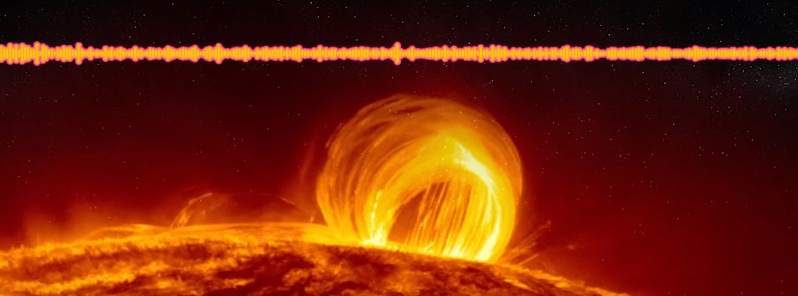Sounds of the solar wind as recorded by Parker Solar Probe


Just 17 months since launch, and after three orbits around the Sun, NASA's Parker Solar Probe – designed, built, and now operated by Johns Hopkins Applied Physics Laboratory (APL) – brings us amazing sounds of solar wind and hints at origins of this ever-present wind.
Made of electrons, protons and heavier ions, the solar wind courses through the solar system at roughly 1.6 million km/h (1 million mph), barreling over everything in its path.
"We are looking at the young solar wind, being born around the Sun. And it’s completely different from what we see here near Earth," said mission Project Scientist Nour Raouafi.
Raouafi said they 'expected big discoveries, but what we’re actually seeing is beyond anything anybody imagined.'
The spacecraft’s FIELDS instrument can eavesdrop on the electric and magnetic fluctuations caused by plasma waves. It can 'hear' when the waves and particles interact with one another, recording frequency and amplitude information about these plasma waves that scientists could then play as sound waves. And it results in some striking sounds.
Researchers suspected that plasma waves within the solar wind could be responsible for some of the wind’s odd characteristics. Just as fluctuations in air pressure cause winds that force rolling waves on the ocean, fluctuations in electric and magnetic fields can cause waves that roll through the clouds of electrons, protons and other charged particles that make up the plasma racing away from the Sun. Particles can ride these plasma waves much like the way a surfer rides an ocean wave, propelling them to higher speeds.
Other examples are whistler-mode and dispersive waves.
Whistler-mode waves are caused by energetic electrons bursting out of the Sun’s corona and following magnetic field lines that stretch from the Sun out to the solar system’s farthest edge, spinning around them like they’re riding a carousel. When a plasma wave’s frequency matches how frequently those electrons are spinning, they amplify one another. And it sounds like a scene out of Star Wars.
"Some theories suggest that part of the solar wind’s acceleration is due to these escaping electrons. We can use observations of these waves to work our way backward and probe the source of these electrons in the corona," said David Malaspina, a member of the FIELDS team.
Dispersive waves are plasma waves that quickly shift from one frequency to another as they move through the solar wind. These shifts create a sort of “chirp” that sounds like wind rushing over a microphone.
"These waves haven’t been detected in the solar wind before, at least not in any large numbers," Malaspina explained. They’re rare near the Earth, so researchers thought they were unimportant. But closer to the Sun, these waves are everywhere. "Nobody knows what causes these chirping waves or what they do to heat and accelerate the solar wind. That’s what we’re going to be determining," Malaspina said.
The probe is scheduled to make another 21 orbits around the Sun, using five Venus flybys to draw increasingly closer, allowing scientists to build a more complete evolutionary picture of the solar wind.
Featured image credit: NASA/JPL, John Hopkins/APL

Commenting rules and guidelines
We value the thoughts and opinions of our readers and welcome healthy discussions on our website. In order to maintain a respectful and positive community, we ask that all commenters follow these rules.